Small SUVs, so hot right now. Petrol-electric hybrids, also so hot right now. So the C-HR Hybrid Koba should be the hottest car on the market, but can Toyota's crossover hold up after prolonged testing?
Toyota C-HR 2020: Koba (2WD) (hybrid)
| Engine Type | Inline 4, 1.8L |
|---|---|
| Fuel Type | Premium Unleaded/Electric |
| Fuel Efficiency | 4.3L/100km (combined) |
| Seating | 5 |
| Price From | $26,290 - $32,450 |
| Safety Rating |
|
Report 1 - June 2020
Welcome to 2020, where a worldwide pandemic has stymied travelling and kept nearly all of us confined to our dwellings for weeks at a time.
However, 2020 will also go down as the first year that Toyota cements its hybrid car dominance in the Australian market, with the electrified Corolla and RAV4 models taking off in popularity.
And it doesn't stop there, either, with the newly-arrived hybrid Yaris, as well as a refresh for the Camry on the horizon, Toyota will offer more than ever before for buyers looking to save money at the bowser.
Arguably though, it’s the C-HR small SUV that should capture the hearts and minds of Australia’s SUV-hungry public, which is why we’ve got it for five months to see if it fits the bill for a young, soon-to-be-parents, inner-city couple.
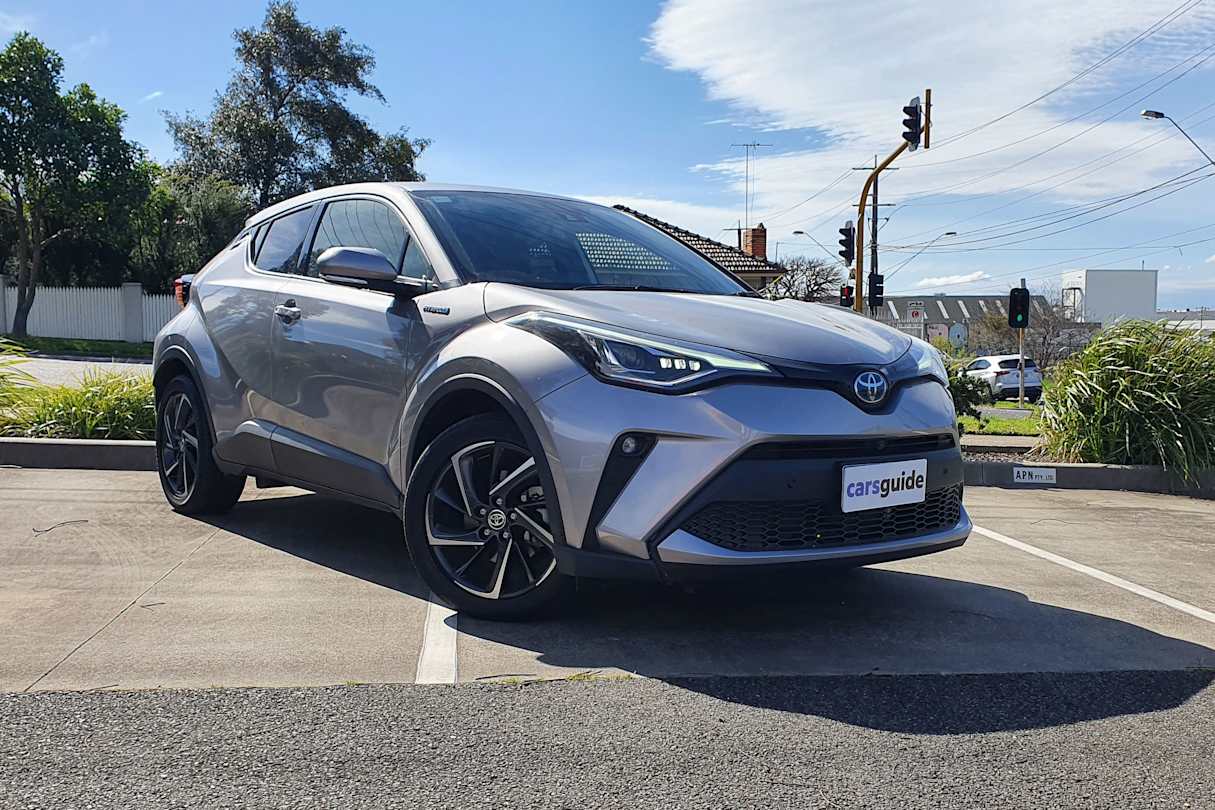
Priced at $37,190, before on-road costs, the Koba Hybrid is the most expensive C-HR currently available in Australia.
With the cheapest Toyota small SUV costing $30,290, stepping up to the electrified version represents a noticeable 23 per cent increase in price.
The Hybrid version of the C-HR is certainly on the expensive side, especially because it is limited to a front-wheel-drive configuration, whereas the other 1.2-litre turbo-petrol version can be had with all-wheel drive.
Don’t be put off too much by that, though, because how much extra grip do you actually need in an inner-city, small SUV runabout?
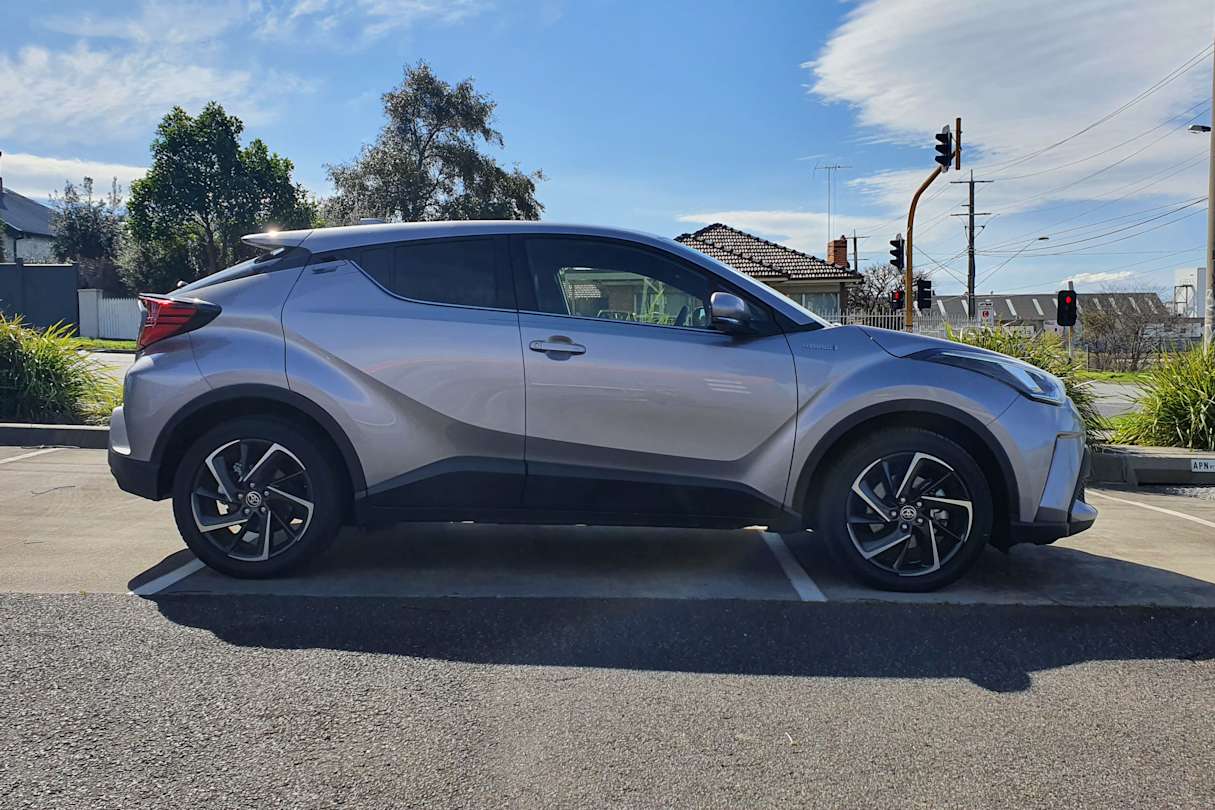
More importantly, our long-term C-HR is the top-of-the-line Koba grade, meaning a long laundry list of equipment.
On the outside, the Koba is distinguished by 18-inch wheels and rear privacy glass, but keen-eyed spotters will also note the blue badges used for the Toyota logo that denotes hybrid models.
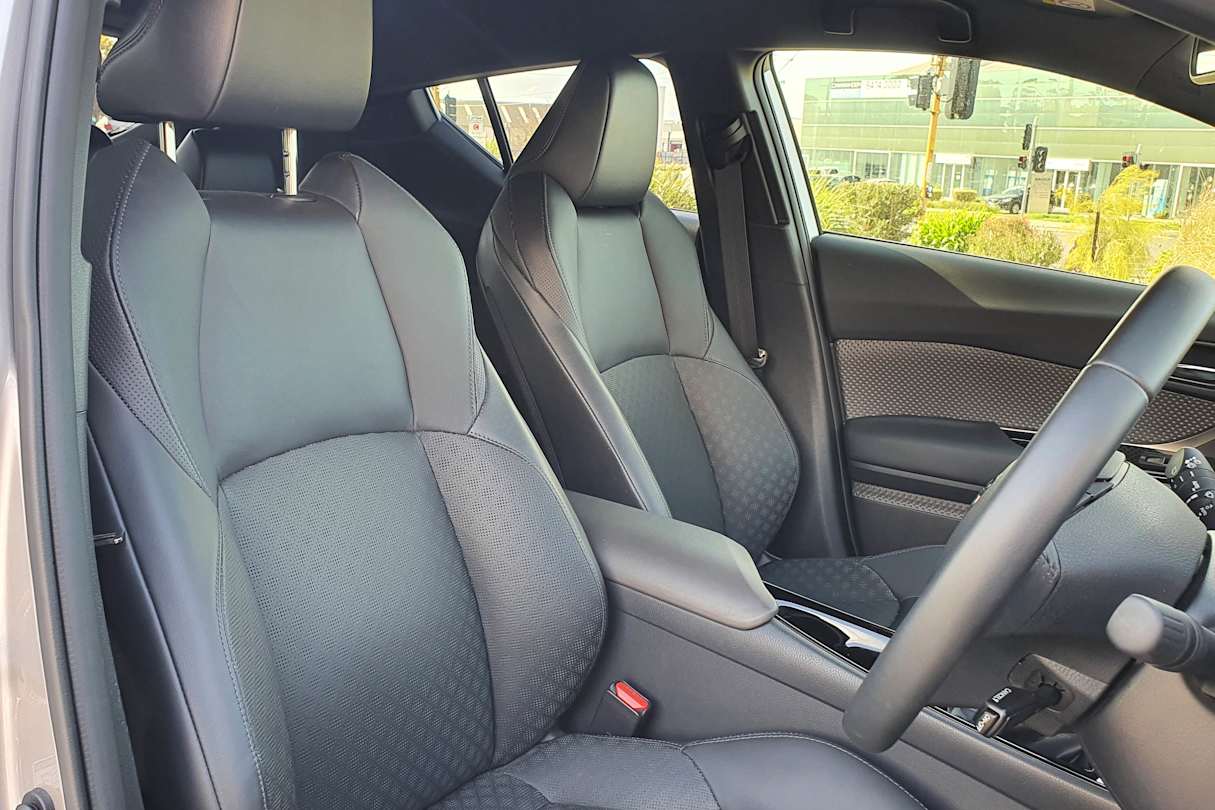
Inside, the C-HR Koba scores an electronic park brake, heated front seats, power adjustable driver’s seat, leather-accented seats, 4.2-inch driver display, push-button start, dual-zone climate control, and soft-touch steering wheel and shifter.
Handling multimedia duties is an 8.0-inch colour touchscreen, which outputs to six speakers littered throughout the cabin, and also features Apple CarPlay/Android Auto connectivity, voice control and in-built satellite navigation.
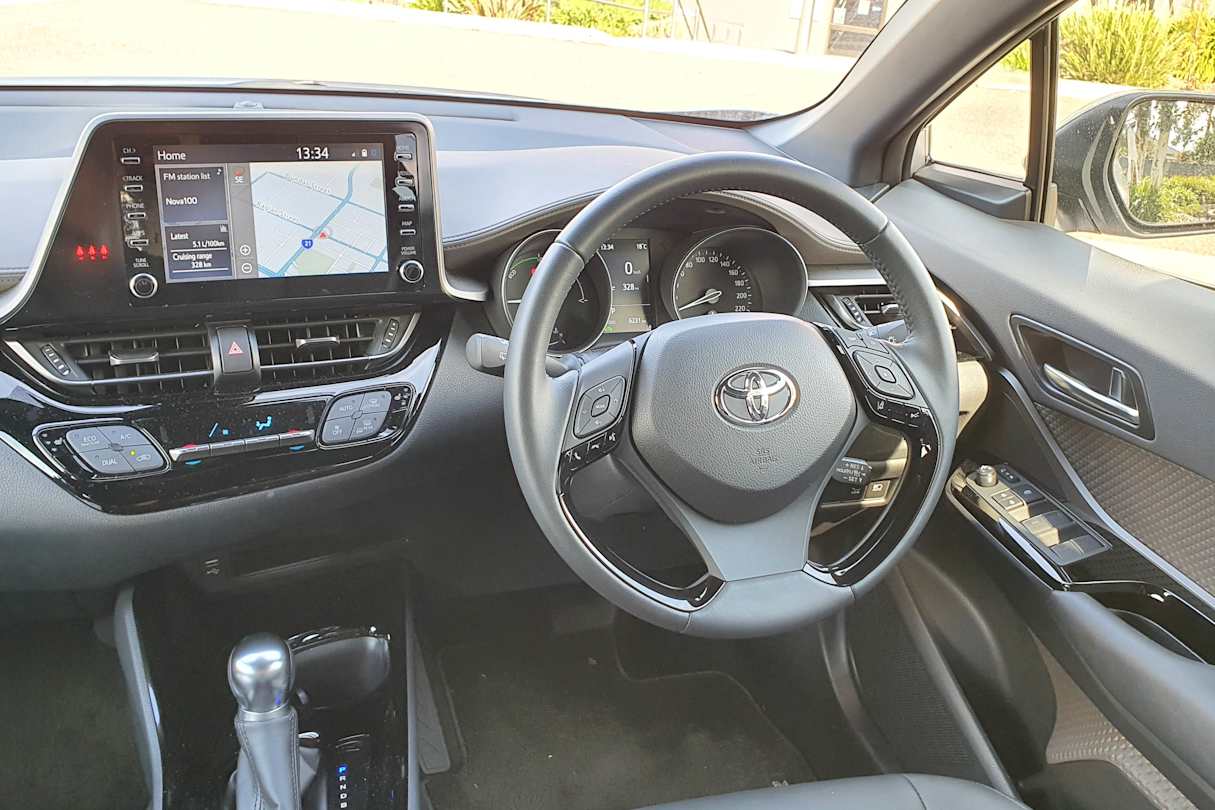
Toyota’s 'Safety Sense' suite is also fitted, which includes lane departure warning, auto high beam, adaptive cruise control, autonomous emergency braking (AEB) and forward collision warning, while blind-spot monitoring, rear cross-traffic alert, hill-start assist, a reversing camera and seven airbags are also included.
So comprehensive is the equipment list, the only options available are metallic paint and a two-tone roof, which are priced at $500 and $450, respectively.
However, all this gear can be had on the non-electrified Koba variants for less money, so the extra spend is really to justify the hybrid powertrain.
Under the bonnet of our long-termer is a 1.8-litre petrol engine, which outputs 74kW/142Nm, paired to an electric motor punching out 53kW/162Nm.
The total system output is 90kW according to Toyota, which is sent to the front wheels via a continuously variable automatic transmission (CVT).
This output might not seem all too exciting, especially given the cheaper 1.2-litre version reaches 85kW/185Nm, but it's in fuel economy where the C-HR comes into its own.
With an official consumption figure of 4.3 litres per 100km, the C-HR Hybrid is one of the most frugal small SUVs available in Australia.
In reality, and after a month with the car relegated to inner-city driving during Melbourne’s lockdown, we managed a figure of 5.1L/100km after just over 600 kilometres of driving – which has been severely restricted.
What’s also nice, is that the C-HR Koba Hybrid only needs 91RON petrol.
If fuel economy is high on your wish list, and an SUV is a must, there really is no beating the Toyota C-HR Koba Hybrid.
But what about the rest of the package?
From the outside, the C-HR certainly looks stylish and distinctive, though we will leave it to you to determine if you like the sharp aesthetics or not.
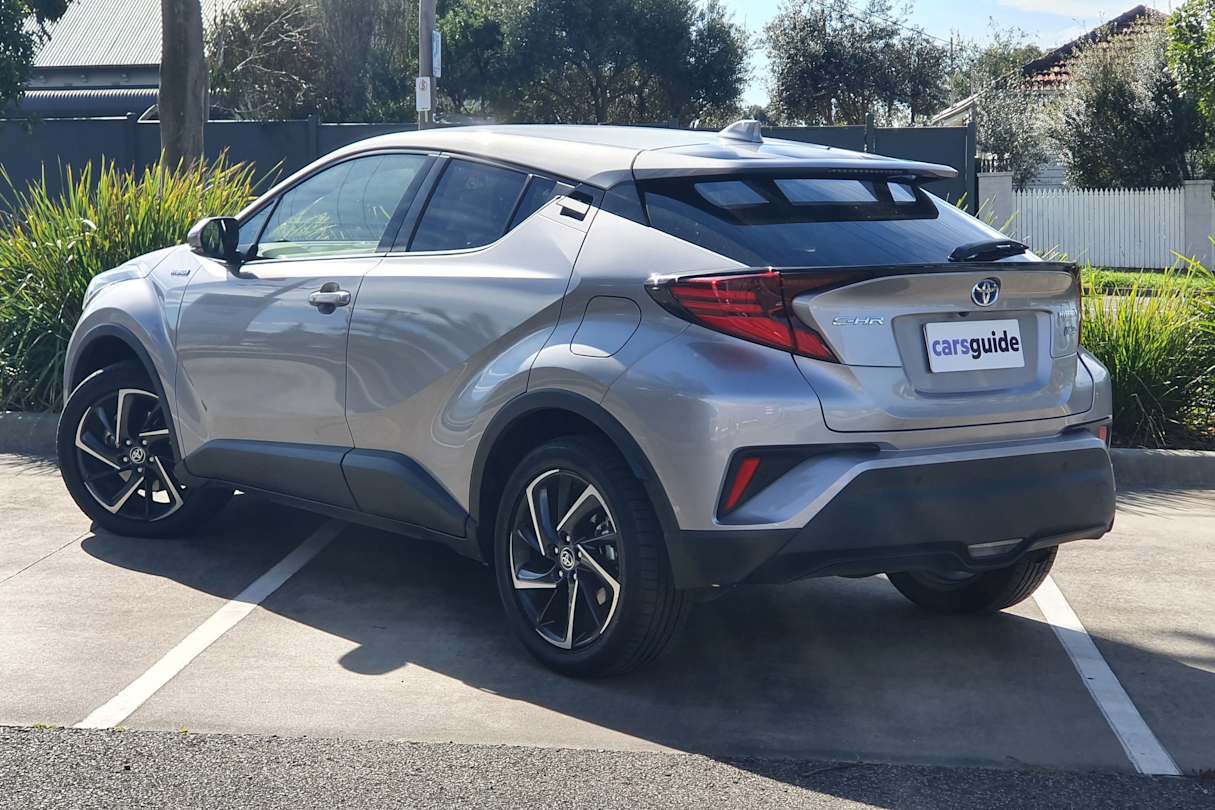
In our opinion, the C-HR delivers the right amount of millennial appeal thanks to the hidden rear door handles, angular front fascia and sharp rear end. But your mileage may vary.
Our test car is finished in a fairly inconspicuous silver colour, but head-turning exterior shades are available including blue, yellow, orange and red, while the two-tone roof option can make your C-HR stand out from the crowd even further.
Inside, the C-HR also delivers in the style department thanks to a mix of gloss-black and soft-touch surfaces, but more on that – as well as practicality – in the coming months.
Acquired: June 2020
Distance travelled this month: 634km
Odometer: 6234km
Average fuel consumption for June: 5.1L/100 (measured at the pump)
Report 2 - July 2020
The rise in popularity of the SUV has long been documented, but there is a misconception that this style of vehicle is more practical than the humble hatchback.
After all, SUVs are larger physically than their car siblings, despite often being built on the same platform, blocking sight lines on every street corner as you slowly creep forward to make sure the traffic is clear for that right-hander.
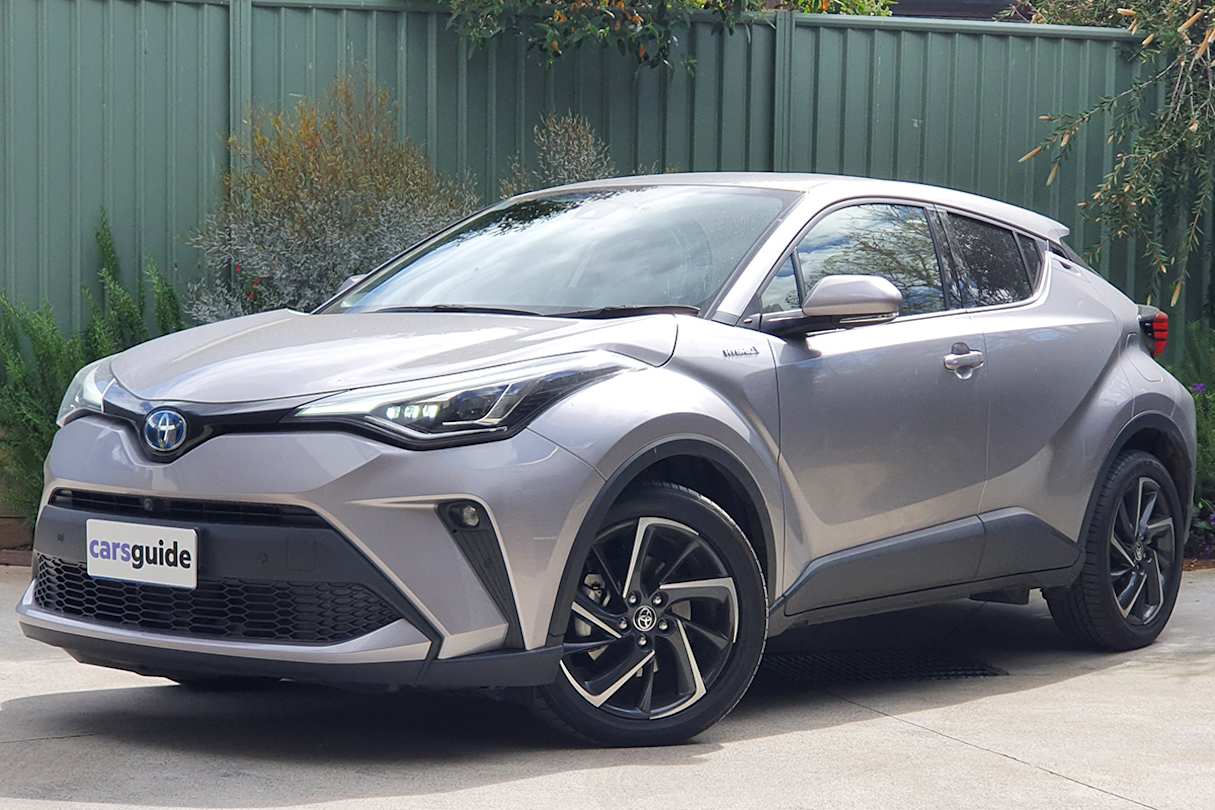
With a higher ride height, increased visibility for drivers and substantially more road presence, it would be safe to assume that bigger equals more space, right?
Here to put that theory to the test is our Toyota C-HR long-termer.
Our Toyota small SUV has been with us for a few months now, and while it certainly is capable of ferrying a young couple around town for the usual trip to the shops or commute, this young couple happens to expanding to a trio soon enough.
With that in mind, can something like the C-HR handle its usual duties, as well as be a vessel to transport a newborn, car seat and pram?
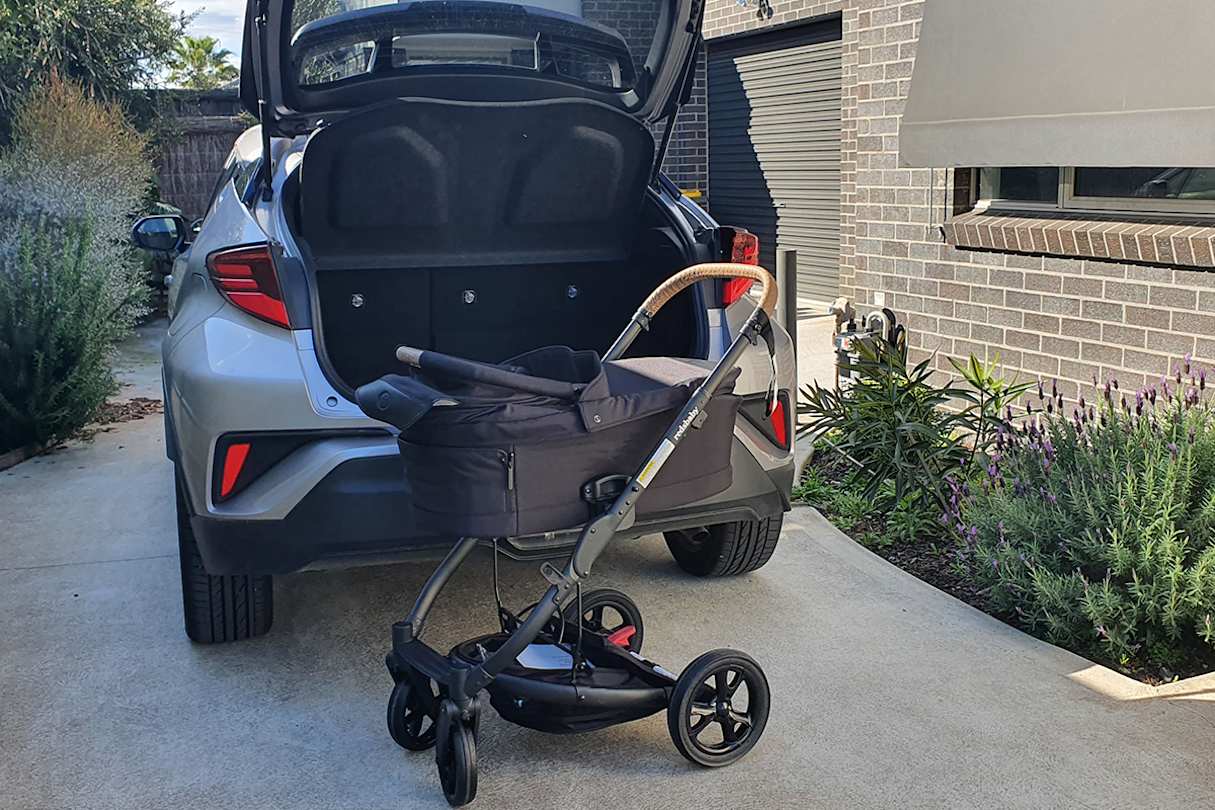
The short answer is no, but the long answer sheds a bit more light on the question of why a small C-HR won’t fit the bill for young families.
Firstly, the boot of the C-HR is quite small, with a total volume capacity of only 377 litres.
Based on the same TNGA platform as the Corolla small car, the C-HR certainly offers more space in the boot than the Corolla hatch (217L – one of its biggest flaws), but is also down when compared to the sedan (470L).
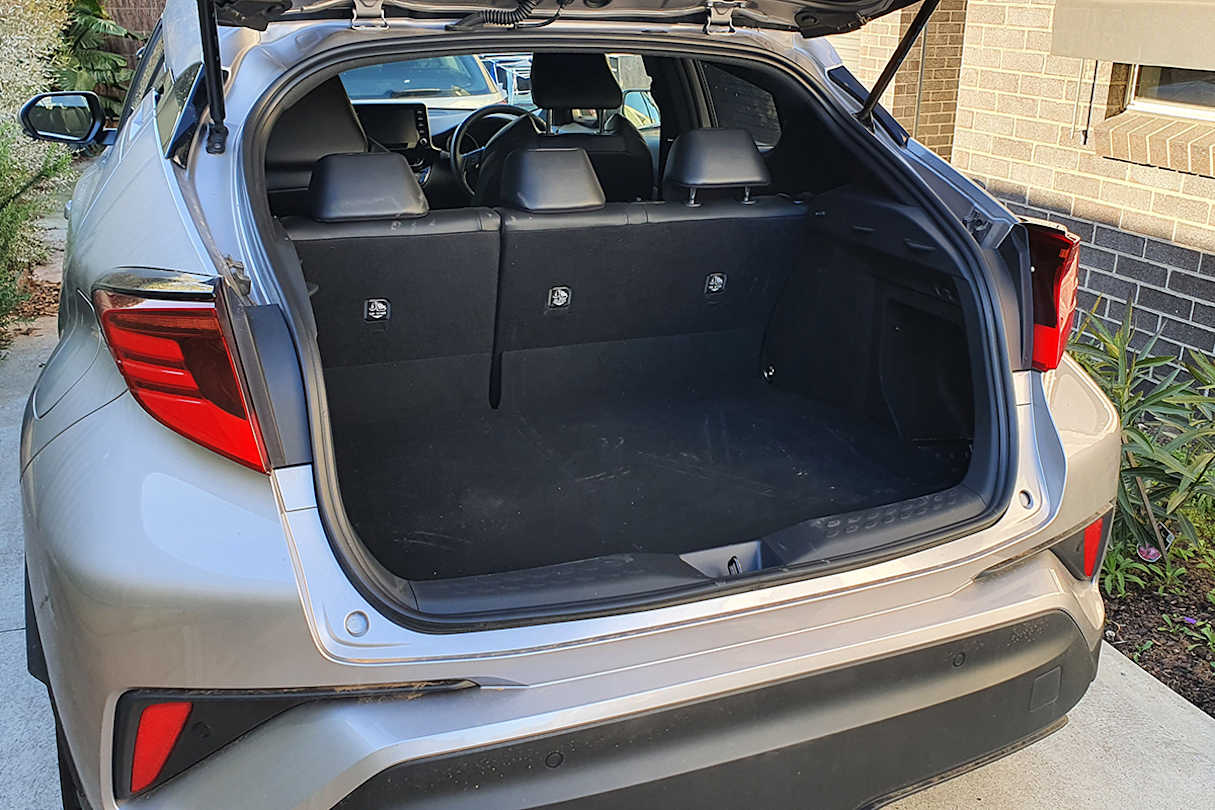
A large reason for this is the C-HR's modest overall length (4390mm), which doesn’t leave much room in the boot to fit something as large and bulky as a pram with a bassinet.
To be fair, its fine for things like weekly groceries or a medium and small suitcase (pictured), but add much more and things start to get crowded.
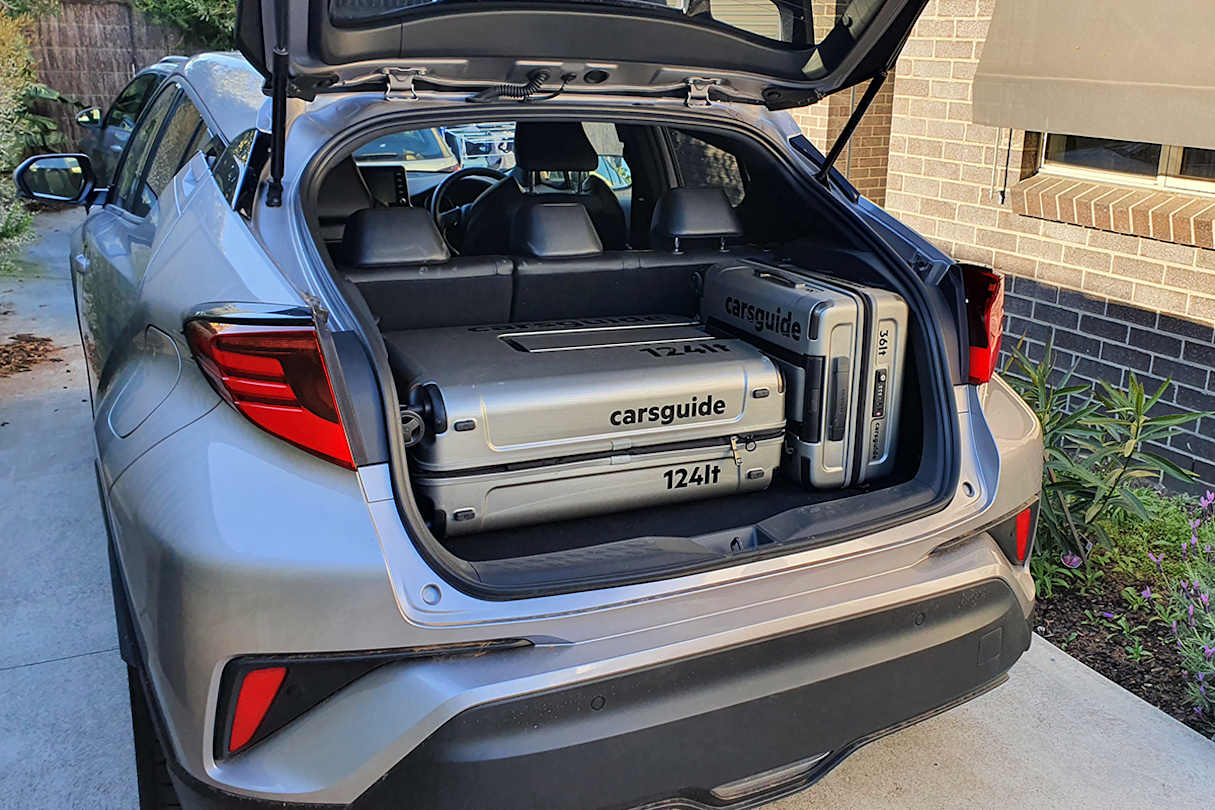
We also reckon a standard stroller, or pram with a child seat and not the bassinet, will be accommodated, but without much room for anything else.
Rivals in the segment offer more room, such as the Kia Seltos (433L) and Nissan Qashqai (430L), but lack a frugal petrol-electric hybrid powertrain.
Is the less room in the boot worth it to save money/time on trips to the bowser? That’s a question you have to answer yourself, but it’s clear the C-HR is not suited for growing families.
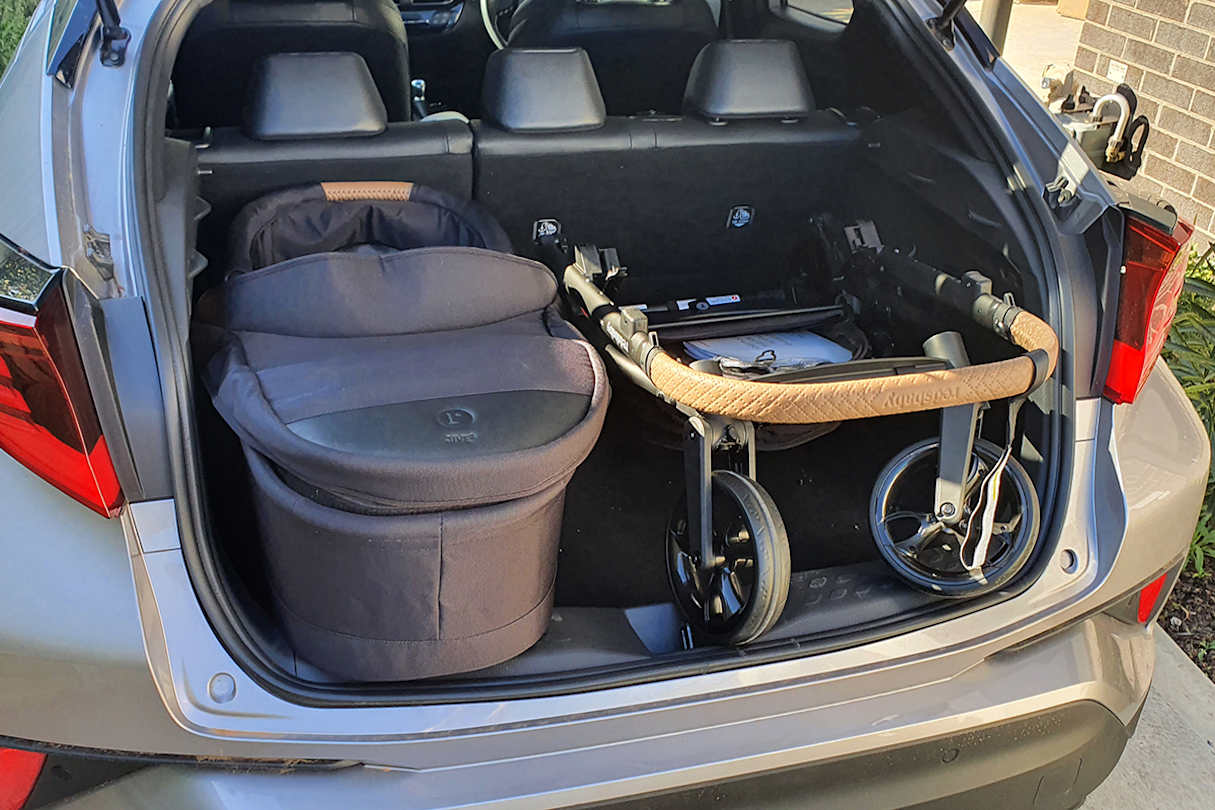
As for the rear seats, a rearward-facing car seat will fit easily enough, and has enough room to manoeuvre all the belts and buckles.
The ISOFIX mounting points are easy to find, but are only fitted to the two outboard rear seats, though all three have a top tether clipping point.
Once the car seat is in place, though, front passengers might find there isn’t much room left for them.
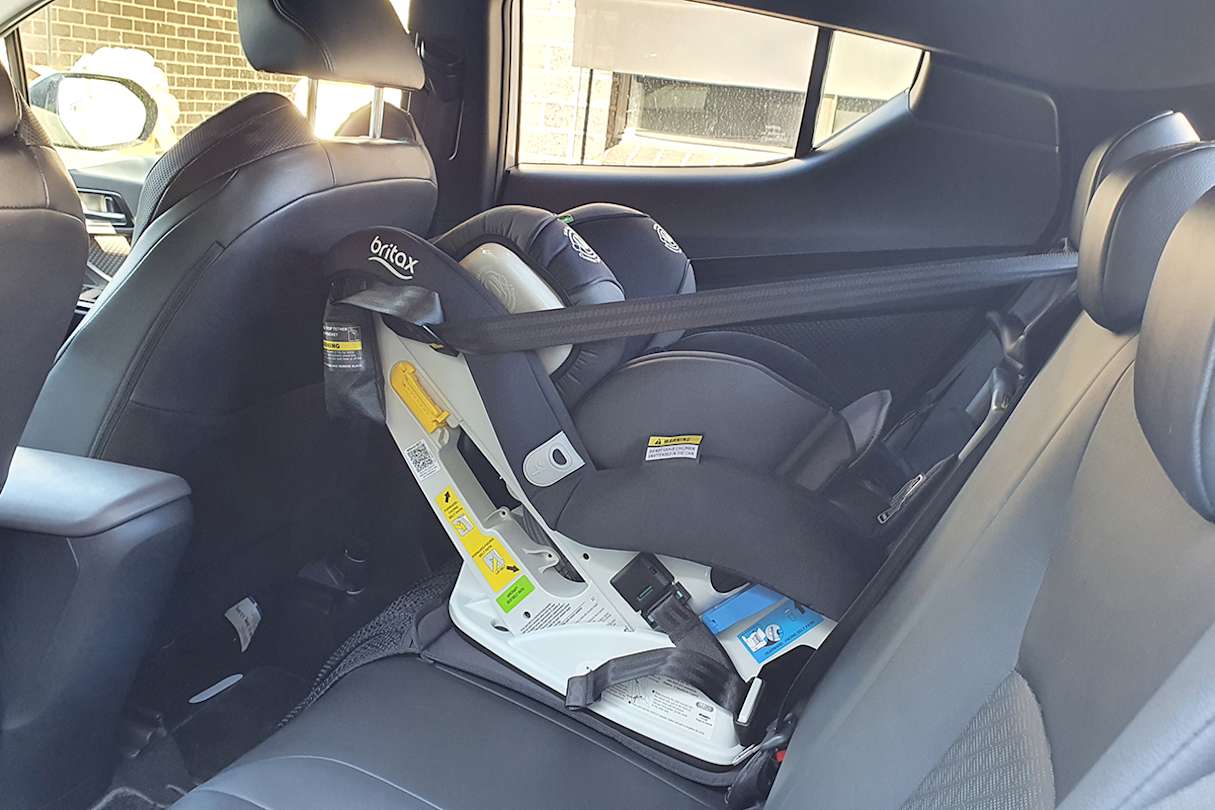
When installed behind the driver, we found there was enough space to pilot the C-HR, but only over short distances and my 183cm (6'0') frame was certainly not in the preferred driving position.
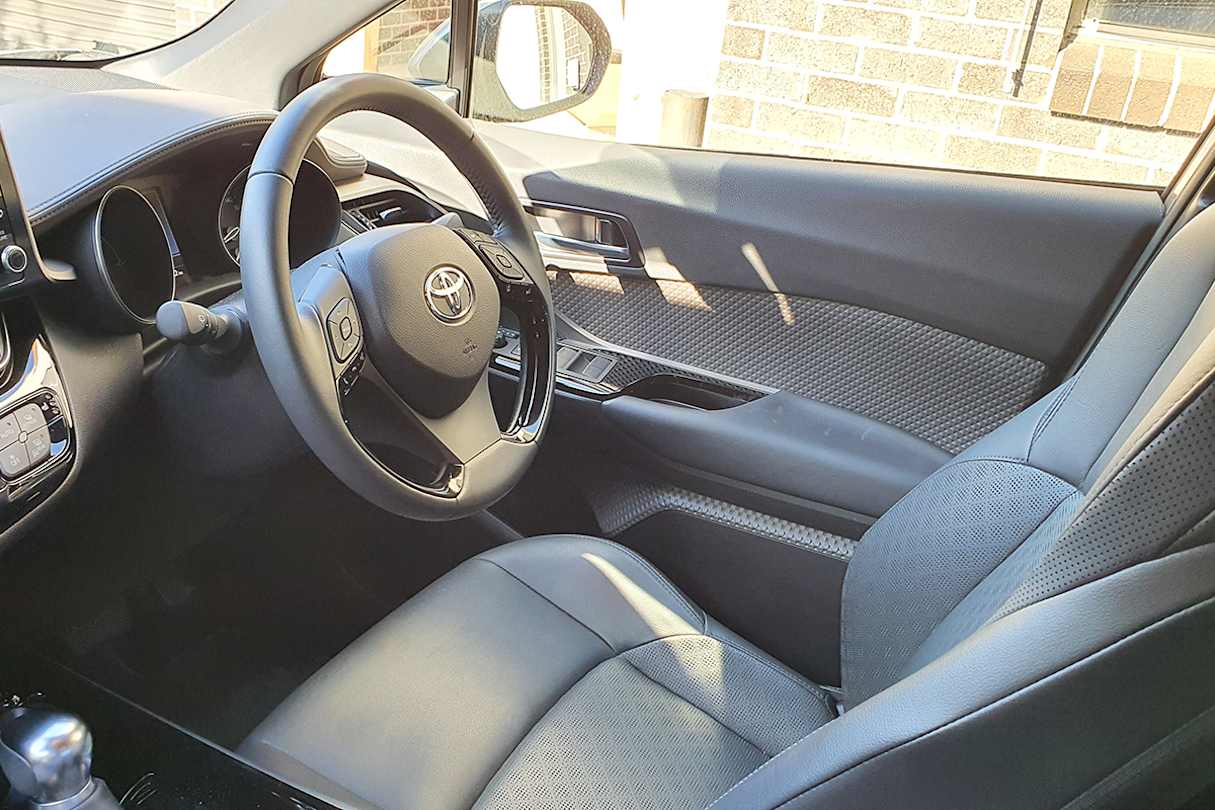
While child seats just fit the C-HR, Toyota’s small SUV might be better used for larger kids on booster seats or as a dog transporter, rather than an outright family hauler.
Those starting a family might be better off looking at an SUV in the size above, or even a station wagon or sedan, as this Toyota C-HR can’t quite cut it as a transporter for the household, even if there are only two members, with a third on the way.
Acquired: June 2020
Distance travelled this month: 322km
Odometer: 6556km
Average fuel consumption for July: 5.0L/100 (measured at the pump)
Report 3 - August 2020
How do you review a car when in lockdown? That’s the question I’m confronted with when staring out at my driveway to see the Toyota C-HR building dirt and dust from a wet and windy Melbourne winter.
Sure, I can drive it to the supermarket and back, but with the nearest Woolies literally only 1.2km away down a straight road with two roundabouts, I’m not going to learn too much about the car dynamically.
This month then, might be a good opportunity to dive into the cost of ownership for our C-HR Hybrid Koba, and work out if it’s actually more cost effective to go for the non-hybrid version with a 1.2-litre engine.
Afterall, electric and hybrid cars are often touted as the more cost-effective mode of transportation than petrol or diesel, so should you buy one now in 2020?
.jpg)
To recap, our C-HR Hybrid Koba is priced at $37,665 before on-road costs, with the equivalent Koba petrol model being $35,165 for a price difference of just $2500.
With both grades being identical in specification, the only thing splitting the difference between the two will be powertrain, meaning it comes down to fuel economy and servicing costs.
Our most recent fuel consumption figure in the Hybrid is a little higher than advertised, 5.0 litres per 100km versus the 4.3L/100km claim, but it’s still noticeably lower than the non-hybrid’s 6.4L/100km figure.
We’ve only travelled a few hundred kilometres in the C-HR (thanks to the Coronavirus lockdown in Melbourne and other parts of Victoria), which might not be a great indicator of use, so let’s take a 20,000km annual journey of some Australians as an indicator.
With Melbourne’s fuel price average currently at $1.27 per litre, and some quick back-of-the-envelope maths, the hybrid would cost about $1092.20 (on official figures) to fill up for the year, while the non-hybrid will cost $1625.60.
.jpg)
With a saving of $533.40 per year on the fuel bill, the C-HR Hybrid recoups its retail price difference in less than five years.
However, one big cost-saving factor is that the hybrid will run on lower-grade 91RON petrol, whereas the 1.2-litre turbo-petrol engine C-HR will need higher quality (and more expensive) 95 RON fuel.
But fuel is only one part of the equation, what about servicing costs?
Well, the first five services for the C-HR Hybrid will set you back $975, or $195 for each 12 month/15,000km scheduled service, compared to the $1000 servicing cost of the non-hybrid version ($200 for each service) over the same time period.
Over 10 years though, the non-hybrid C-HR is actually cheaper to service at $2716.82 versus our test car’s forecast $2879.31 cost. With just $137.49 separating the two spread over a decade, the price discrepancy is negligible at best.
.jpg)
There's no denying the C-HR Hybrid is much more efficient to run, not to mention all the time you will save by not stopping into a servo for a refill, but if you were hoping to save a stack of cash on fuel bills, it might not add up as much as you are hoping.
Of course, there are also other net benefits to picking the petrol-electric hybrid C-HR over its siblings, such as about 30 per cent less tailpipe emissions and a better power-to-weight ratio, but these factors will vary in importance depending on the individual.
Overall, the C-HR Hybrid doesn’t actually cost that much more to buy than the petrol-only counterpart and it will save you more money the longer you own it, so the question shouldn’t be why should you buy one, but why not?
Acquired: June 2020
Distance travelled this month: 37km
Odometer: 6593km
Average fuel consumption for August: 5.0L/100 (measured at the pump)
Report 4 - September 2020
There’s no doubt the Toyota C-HR is an attractive crossover for buyers, especially those who are after the frugality of a petrol-electric hybrid and the high-riding stance of an SUV.
Sure, there are some compromises, namely the small boot space, but for young couples, or even small families with older kids, the C-HR Hybrid Koba will certainly fit the bill.
After four months with Toyota’s hybrid small SUV, though, its biggest rival to overcome might be from within its own stable, with the recent launch of the Yaris Cross.'
_0.jpg)
Though smaller in size (just) and built on the Yaris platform instead of the C-HR’s Corolla-based underpinnings, the Yaris Cross still offers enough room for the aforementioned buyer, while also available with a hybrid powertrain, at a cheaper price.
In fact, with the cheapest hybrid being $31,990, before on-road costs, a petrol-electric Yaris Cross can be had for about $5700 less than the C-HR, though you’d have to opt for the $34,900 Urban grade to score similar levels of equipment, closing the gap to around $2800.
Crucially, the Yaris Cross comes with a larger boot (390 litres vs the C-HR’s 318L), making it slightly more practical, but also has a less potent 1.5-litre petrol-electric powertrain.
.jpg)
All in all, the two models seem to go tit-for-tat on paper, but we’ll have to reserve judgement on the better choice once more familiar with the Yaris Cross.
For now, the C-HR remains a supremely capable and appealing choice for the environmentally conscious.
And while a petrol-electric small SUV might seem like a bit of a novelty now, we’ve shown in our previous reviews the benefits of picking the hybrid over its 1.2-litre turbo-petrol counterpart.
_0.jpg)
Toyota might be a standout in offering this engine technology in this class now, but there are competitors coming, with the likes of the new Mitsubishi Eclipse Cross and next-generation Nissan Qashqai confirmed with hybrid power.
To be fair, both models will employ electric engine technology in different ways – the latter with a plug-in hybrid electric vehicle (PHEV) set-up, and the latter making use of Nissan’s 'e-Power' system wherein the petrol engine exclusively charges the batteries – but there will be more options in the short-term future.
It’s safe to say hybrid technology is here to stay, then, so should you take the plunge on the Toyota C-HR now, or wait?
_0.jpg)
Our four months with the car has yielded a 4.9 litre per 100km fuel economy rating, one of the best we’ve tested, paired with the head-turning looks and high levels of equipment on offer in the Koba grade make this C-HR an easy recommendation.
The caveat, of course, is the smaller-than-expected boot space, but if practicality isn’t high on your list, the Toyota C-HR should be in consideration.
Acquired: June 2020
Distance travelled this month: 79km
Odometer: 6672km
Average fuel consumption for September: 4.9L/100 (measured at the pump)
Pricing Guides

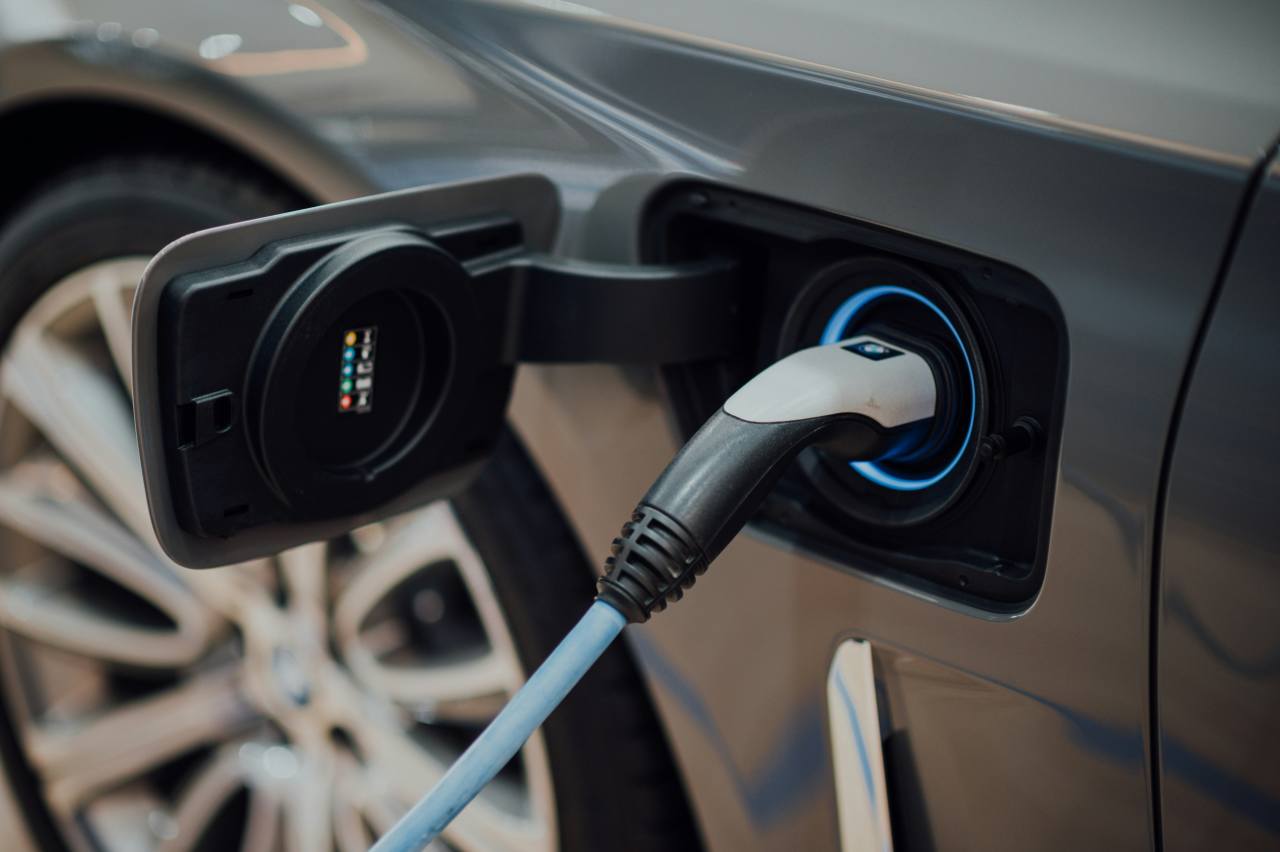
.jpg)

.jpg)










































.jpg)
.jpg)
.jpg)
.jpg)

.jpg)
.jpg)